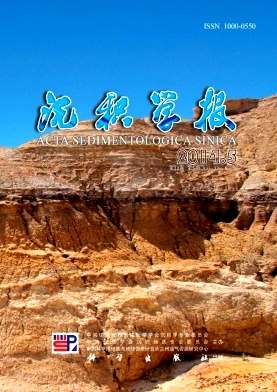|
[1]
|
鲍荣华, 于艳蕊. 2010年南非矿产资源及其开发利用[J]. 国土资源情报, 2011(11):20-25[Bao Ronghua, Yu Yanrui. Mineral resources and the exploration and utilization in South Africa, 2010[J]. Land and Resources Information, 2011(11): 20-25] |
|
[2]
|
董骁方. 南非矿产资源开发与利用[J]. 现代矿业, 2012(7):1-6[Dong Xiaofang. Exploration and utilization of mineral resources in South Africa[J]. Modern Mining, 2012(7): 1-6] |
|
[3]
|
《矿产资源综合利用手册》编辑委员会. 矿产资源综合利用手册[M]. 北京:科学出版社, 2000:252[Editorial Committee of "Handbook of comprehensive utilization of mineral resources". Handbook of Comprehensive Utilization of Mineral Resources[M]. Beijing: Science Press, 2000: 252] |
|
[4]
|
Beukes N J. The transval sequence in Griqualand West[C]//Anhaeusser C R, Maske S. Mineral Deposits of Southern Africa. Johannesburg: The Geological Society of South Africa, 1986: 818-828 |
|
[5]
|
Dowding C E, Fey M V. Morphological, chemical and mineralogical properties of some manganese-rich oxisols derived from dolomite in Mpumalanga province, South Africa[J]. Geoderma, 2007, 141(1/2): 23-33 |
|
[6]
|
De Villiers J E. The manganese deposits of Griqualand West, South Africa: Some mineralogic aspects[J]. Economic Geology, 1983, 78(6): 1108-1118 |
|
[7]
|
Grobbelaar W S, Beukes N J. The Bishop and Glosam manganese mines and Beeshoek iron ore mine of the Postmasburg area[C]//Anhaeusser C R, Maske S. Mineral deposits of Southern Africa. Johannesburg: The Geological Society of South Africa, 1986: 957-961 |
|
[8]
|
Altermann W, Hiilbich L W. Structural history of the southwestern corner of the Kaapvaal Craton and the adjacent Namaqua realm[J]. Precambrian Research, 1991, 52(1/2): 133-166 |
|
[9]
|
Beukes N J, Dorland H, Gutzmer J, et al. Tropical laterites, life on land, and the history of atmospheric oxygen in the Paleoproterozoic[J]. Geology, 2002, 30(6): 491-494 |
|
[10]
|
Van Schalkwyk J F, Beukes N J. The Sishen iron ore deposit, griqualand West[C]//Anhaeusser C R, Maske S. Mineral deposits of Southern Africa. Johannesburg: The Geological Society of South Africa, 1986: 931-956 |
|
[11]
|
SACS (South African Committee for Stratigraphy). Stratigraphy of South Africa, Handbook 8, Part 1 of the Department of Mineral and Energy Affairs[M]. Pretoria: Government Printer, 1980: 690 |
|
[12]
|
Beukes N J, Smit C A. New evidence for thrust faulting in Griqualand West, South Africa: implications for stratigraphy and the age of red beds[J]. South African Journal of Geology, 1987, 90 (4): 378-394 |
|
[13]
|
Plehwe-leisen E V, Klemm D D. Geology and ore genesis of the manganese ore deposits of the Postmasburg manganese-field, South Africa[J]. Mineralium. Depoista, 1995, 30(3/4): 257-267 |
|
[14]
|
Schneiderhöhn H. Mineralbestand und Gefüge der Manganerze von Postmasburg, Griqualand West, Südafrika[J]. Neues Jahrb. Mineral., Beilagen Band, 1931, 64A: 701-726 |
|
[15]
|
Gutzmer J, Beukes N J. Mineralogy and mineral chemistry of oxide-facies manganese ores of the Postmasburg manganese field, South Africa[J]. Mineralogical Magazine, 1997, 61(2): 213-231 |
|
[16]
|
DeVilliers J E. On the origin of the Griqualand West manganese and iron deposits[J]. South African Journal of Science, 1992, 88: 12-25 |
|
[17]
|
Kuleshov V N. Manganese Deposits:Communication 1. Genetic Models of Manganese Ore Formation[J]. Lithology and Mineral Resources, 2011, 46(5): 473-493 |
|
[18]
|
Gutzmer J, Beukes N J, Yeh H W. Fault controlled metasomatic alteration of Early Proterozoic sedimentary manganese ores at Mamatwan Mine, Kalahari Manganese Field, South Africa[J]. South African Journal of Geology, 1997, 100(1): 53-71 |
|
[19]
|
Gutzmer J. Genesis and alteration of the Kalahari and Postmasburg manganese deposits, Griqualand West, South Africa[D]. Johannesburg: RAU, 1996 |
|
[20]
|
Nicholson K. Contrasting mineralogical-geochemical signatures of manganese oxides: Guides to metallogenesis[J]. Economic Geology, 1992, 87(5): 1253-1264 |
|
[21]
|
DeVilliers J E. The manganese deposits of the Union of South Africa[C]. International Geological Congress, 20th, Mexico City, Symposium del Manganeso, 1956 |
|
[22]
|
Bardossy G. Karst bauxites, bauxite deposits on carbonate rocks[C]. Amsterdam: Elsevier, 1982: 441 |
|
[23]
|
Leisen H. Geologisch-tektonische Kartierung der Griqualand West and Olifantshoek Sequenzen in der N/Srdlichen Kapprovinz, Südafrika, auf der Grundlage yon Landsat-Mss-Daten und terrestrisch-photogrammetrischen Aufnahmen[D]. Ludwig-Maximilian-University, Miichen, 1987, 118 |
|
[24]
|
James N P, Choquette P W. Paleokarst[M]. New York:Springer Verlag, 1988: 416 |
|
[25]
|
Kupferbfirger W, Boardman L G, Bosch P R. New considerations concerning the manganese ore deposits in the Postmasburg and Kuruman areas, Northern Cape Province, Union of South Africa[C]. International Geological Congress, 20th, Mexico City, Symposium del Manganeso, 1956 |
|
[26]
|
Du Toit A L. The manganese deposits of Postmasburg, South Africa[J]. Economic Geology, 1933, 28(2): 95-122 |






 DownLoad:
DownLoad: